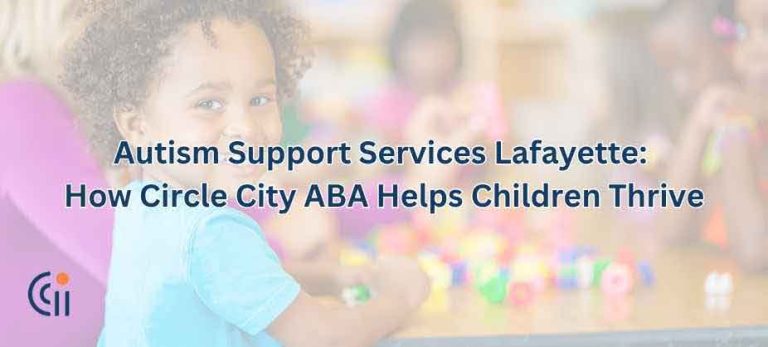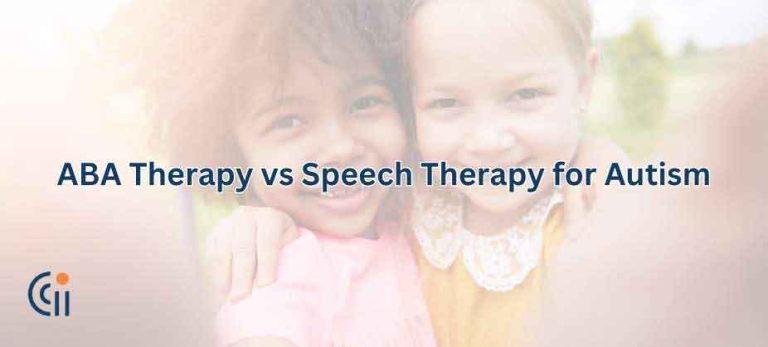As the summer winds down and the new school year approaches, many parents face the annual ritual of preparing their children for the transition back to school. For parents of children with autism, this transition can bring unique challenges and concerns. Ensuring that your child with autism feels supported and ready to face the school environment is crucial for their success and well-being. At Circle City ABA, we understand these challenges and are here to provide guidance on how to best support your child with autism in the classroom. Here are some tips and strategies to help make the back-to-school transition smoother for your family.
Create a Structured Environment
Children with autism often thrive in structured environments where they know what to expect. The routine and predictability can provide a sense of security and reduce anxiety. Here’s how you can create a structured environment at home and help your child adjust to the structure at school:
- Establish a Consistent Daily Routine: A few weeks before school begins, start implementing a school-year routine. This can include regular wake-up times, meal times, and bedtime routines.
- Visual Schedules: Use visual schedules to outline the daily routine. Pictures and icons can help your child understand and anticipate daily activities.
- Practice School Routines: If possible, visit the school with your child before the first day. Practice the route to school, walking to the classroom, and other daily activities.
Incorporating Interests
Children with autism often have specific interests or hobbies that can be powerful tools for engagement and learning. Incorporating these interests into their education can make learning more enjoyable and meaningful:
- Link Interests to Curriculum: Work with your child’s teacher to incorporate your child’s interests into their learning. For example, if your child loves trains, use train-themed materials for math or reading lessons.
- Motivation and Rewards: Use your child’s interests as rewards for completing tasks or as motivational tools during challenging activities.
Communication with School Staff
Effective communication with teachers and school staff is key to supporting your child with autism in the classroom. Ensure that everyone involved in your child’s education is aware of their needs and the strategies that work best for them:
- IEP Meetings: Attend Individualized Education Program (IEP) meetings and ensure that your child’s goals and accommodations are up-to-date. Share any new information or changes in your child’s needs with the team.
- Teacher Communication: Establish regular communication with your child’s teacher. Share insights about your child’s strengths, challenges, and effective strategies.
- Behavior Plans: If your child has a behavior intervention plan, review it with school staff and ensure they understand how to implement it consistently.
Supporting Social Skills
Social interactions can be challenging for children with autism, but with the right support, they can learn to navigate these situations more effectively. Here are some ways to help your child develop social skills:
- Social Stories: Use social stories to prepare your child for different social scenarios they might encounter at school. These can include making friends, taking turns, and dealing with conflicts.
- Role-Playing: Practice social interactions through role-playing at home. This can help your child become more comfortable with social situations they will face at school.
- Peer Buddies: Work with the school to identify peer buddies who can support your child in social situations. Having a buddy can make navigating the school environment less daunting.
Creating a Supportive Environment
Creating a supportive environment at school is crucial for helping your child with autism succeed. Here are some strategies to consider:
- Sensory Accommodations: Work with the school to ensure that sensory accommodations are in place. This might include access to a quiet room, noise-canceling headphones, or sensory breaks.
- Positive Reinforcement: Encourage the use of positive reinforcement in the classroom. Recognizing and rewarding your child’s efforts can boost their confidence and motivation.
- Professional Support: If your child receives ABA therapy or other professional support, collaborate with the school to integrate these strategies into the classroom setting.
Preparing for the First Day
The first day of school can be overwhelming for any child, but with some preparation, you can help your child with autism feel more comfortable:
- School Supplies: Involve your child in choosing school supplies. Familiarity with their belongings can provide a sense of comfort.
- Meet the Teacher: Arrange for your child to meet their teacher and visit the classroom before the first day. This can help reduce anxiety and make the environment feel more familiar.
- First Day Plan: Create a plan for the first day, including the schedule and any special activities. Review this plan with your child so they know what to expect.
Conclusion
Going back to school with autism can present unique challenges, but with careful planning and support, you can help your child navigate this transition successfully. At Circle City ABA, we are committed to supporting students with autism and their families. By creating a structured environment, incorporating interests, communicating effectively with school staff, and preparing your child for social interactions, you can set the stage for a positive and successful school year.
Remember, you are your child’s strongest advocate. With your support and the right strategies, your child can thrive in the classroom and beyond. If you need additional guidance or support, please reach out to Circle City ABA. We are here to help you and your child every step of the way.


